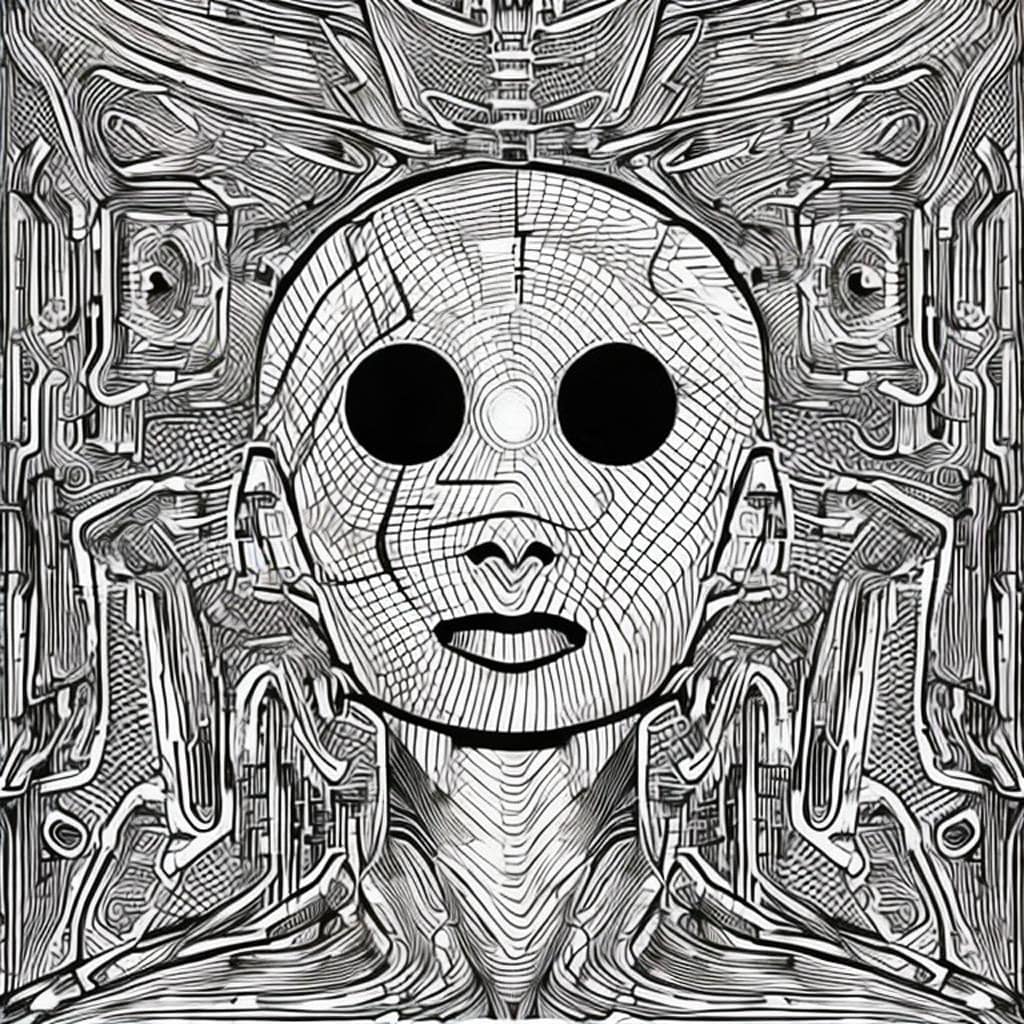Deep Learning, NLP, Computer Vision, Reinforcement Learning, Transfer Learning, and Generative Models
What is Edge AI
Edge AI, also known as edge computing or edge analytics, refers to the practice of deploying artificial intelligence (AI) algorithms and models directly on edge devices, such as smartphones, Internet of Things (IoT) devices, and other embedded systems, rather than relying on cloud-based processing.
By processing data on the edge device itself, Edge AI can provide faster, more efficient, and more reliable results. It can also reduce the amount of data that needs to be transmitted to the cloud, which can help reduce latency, lower bandwidth costs, and improve privacy and security.
Examples of applications that can benefit from Edge AI include facial recognition, object detection, speech recognition, and natural language processing. Edge AI can also be used to improve energy efficiency in buildings, optimize supply chain logistics, and enable autonomous vehicles and drones to make decisions in real time.
Edge AI offers the potential to bring powerful AI capabilities to a wide range of devices and applications, enabling new use cases and transforming the way we interact with technology.
What is deep learning
Deep learning is a subset of machine learning that involves training artificial neural networks with multiple layers to recognize and extract patterns from data. It is inspired by the structure and function of the human brain, which is made up of interconnected neurons that communicate with each other.
Deep learning algorithms use large amounts of labeled data to learn complex hierarchical representations of the input data. The neural network is trained by adjusting the weights of the connections between the neurons in each layer so that the output of the network matches the desired output. The network is then tested on new data to see how well it can generalize.
Deep learning has achieved remarkable success in many areas, including computer vision, natural language processing, speech recognition, and playing games such as Go and chess. For example, deep learning models are used to power image and speech recognition on smartphones, enable autonomous driving in cars, and improve medical diagnosis.
Some of the key benefits of deep learning include its ability to automatically learn complex features from raw data, its ability to scale to large datasets, and its ability to generalize to new data. However, deep learning can be computationally expensive and requires large amounts of labeled data for training, which can be a challenge in some applications.
What is NLP
NLP stands for Natural Language Processing, which is a subfield of artificial intelligence (AI) that focuses on the interaction between humans and computers using natural language. It involves teaching computers to understand, interpret, and generate human language.
NLP draws on a variety of disciplines, including computer science, linguistics, and cognitive psychology, to develop algorithms and techniques for processing and analyzing text and speech data. Some of the key tasks in NLP include:
- Text classification: Assigning labels or categories to text based on its content, such as sentiment analysis, spam filtering, or topic classification.
- Named entity recognition: Identifying and categorizing named entities in text, such as people, organizations, and locations.
- Information extraction: Automatically extracting structured information from unstructured text data, such as identifying key phrases or relationships between entities.
- Machine translation: Translating text from one language to another, such as Google Translate.
- Question answering: Answering questions posed by users in natural language, such as Siri or Alexa.
- Sentiment analysis: Analyzing the sentiment or emotion expressed in text, such as whether a review is positive or negative.
NLP has a wide range of applications, including chatbots and virtual assistants, search engines, social media monitoring, and content analysis. As natural language is a complex and nuanced medium, NLP is a rapidly developing field that involves ongoing research and development of new techniques and approaches.
What is computer vision
Computer vision is a field of artificial intelligence that focuses on enabling computers to interpret, analyze, and understand the visual world. It involves developing algorithms and techniques for processing, analyzing, and understanding images and videos.
Computer vision draws on a range of techniques from machine learning, signal processing, and computer graphics to identify patterns and extract meaningful information from visual data. Some of the key tasks in computer vision include:
- Image recognition: Identifying objects, people, or other features in an image, such as facial recognition or object detection.
- Object tracking: Following the movement of objects in a video over time.
- Image segmentation: Dividing an image into different regions based on their visual properties, such as color or texture.
- Image generation: Creating new images or videos based on existing data, such as generating realistic images of people or landscapes.
- Scene reconstruction: Building a 3D model of a scene from multiple images or videos.
Computer vision has a wide range of applications, including autonomous vehicles, medical image analysis, security and surveillance, and augmented and virtual reality. It has enabled significant advancements in fields such as self-driving cars, robotics, and quality control in manufacturing.
As the field continues to develop, researchers are exploring new techniques, such as deep learning, to improve the accuracy and efficiency of computer vision systems.
What is reinforcement learning
Reinforcement learning is a type of machine learning that involves training an agent to take actions in an environment in order to maximize a reward signal. It is inspired by the way that animals learn through trial-and-error interactions with their environment.
In reinforcement learning, the agent interacts with the environment by taking actions and receiving feedback in the form of rewards or penalties. The goal is to learn a policy, or a set of rules, that maps states of the environment to actions that maximize the expected cumulative reward over time.
Reinforcement learning can be used to solve a wide range of problems, such as game playing, robotics, and control systems. Some examples of applications of reinforcement learning include:
- Game playing: Reinforcement learning algorithms have been used to develop agents that can play complex games like chess, Go, and poker at a superhuman level.
- Robotics: Reinforcement learning can be used to train robots to perform complex tasks, such as grasping and manipulating objects or navigating complex environments.
- Control systems: Reinforcement learning can be used to optimize the performance of control systems, such as power grids or traffic management systems.
Reinforcement learning can be challenging because the agent must balance the exploration of the environment to learn new strategies with the exploitation of learned strategies to maximize rewards. Additionally, the reward signal may be sparse or delayed, making it difficult for the agent to learn a good policy. Researchers are actively working on developing new techniques, such as deep reinforcement learning, to address these challenges and enable reinforcement learning to be applied to even more complex problems.
What is transfer learning
Transfer learning is a machine learning technique in which a model trained on one task is reused as a starting point for a model on a different but related task. The idea is to leverage the knowledge learned from one task to improve performance on a different but related task, even when the new task has a different distribution of data.
In transfer learning, the pre-trained model, which is often trained on a large dataset, is used to extract useful features from the new dataset. The extracted features are then used to train a new model on the new task, often with less data than would be required to train a model from scratch.
Transfer learning has been shown to be effective in a variety of applications, including image recognition, natural language processing, and speech recognition. Some examples of transfer learning include:
- Fine-tuning pre-trained models: Fine-tuning a pre-trained model on a new dataset is a common use of transfer learning. For example, a model trained on the ImageNet dataset can be fine-tuned on a smaller dataset of flowers to improve performance on the flower recognition task.
- Feature extraction: In this approach, the pre-trained model is used as a fixed feature extractor, and the extracted features are used to train a new model. For example, a model trained on the ImageNet dataset can be used to extract features from images for a new task, such as object detection.
- Multi-task learning: In this approach, the pre-trained model is used to learn multiple tasks simultaneously. For example, a model trained on speech recognition can be used to recognize different languages or accents.
Transfer learning can save time and resources in training machine learning models, and it can improve performance on tasks with limited data. However, transfer learning is not always appropriate or effective, and the pre-trained model needs to be carefully selected based on the nature of the new task.
What is a generative model
A generative model is a type of machine learning model that learns to generate new data that is similar to the training data it was given. The goal of a generative model is to learn the underlying probability distribution of the data and use that distribution to generate new samples.
Generative models can be used for a variety of tasks, such as image and video generation, text generation, and data augmentation. Some examples of generative models include:
- Variational autoencoder (VAE): VAEs are generative models that use neural networks to learn a compressed representation of the input data, called a latent space. VAEs can generate new data by sampling points in the latent space and decoding them back to the original data space.
- Generative adversarial network (GAN): GANs are generative models that consist of two neural networks: a generator network that generates new samples, and a discriminator network that tries to distinguish between the generated samples and the real data. The generator is trained to generate samples that fool the discriminator, and the discriminator is trained to correctly distinguish between real and fake samples.
- Autoregressive models: Autoregressive models generate new data by modeling the conditional probability distribution of each data point given the previous points. Examples of autoregressive models include language models that generate text by predicting the next word given the previous words, and image models that generate images by predicting the next pixel given the previous pixels.
Generative models have many applications, such as data augmentation, missing data imputation, and simulation. However, generative models can be challenging to train and evaluate, and the generated samples may not always be of high quality or be representative of the training data.
Are there other ai fundamtal topics we did not mention
Yes, there are many other fundamental topics in AI that we did not cover in the suggested title. Some of these topics include:
- Supervised learning: A type of machine learning where the algorithm is trained on labeled examples to learn to make predictions on new, unseen data.
- Unsupervised learning: A type of machine learning where the algorithm is trained on unlabeled data to learn patterns and structure in the data.
- Semi-supervised learning: A type of machine learning where the algorithm is trained on a combination of labeled and unlabeled data to improve performance.
- Clustering: A type of unsupervised learning where the goal is to group similar data points together.
- Dimensionality reduction: A technique for reducing the number of features in a dataset while preserving the most important information.
- Time series analysis: A branch of machine learning that focuses on analyzing and forecasting time series data, such as stock prices or weather patterns.
- Bayesian inference: A statistical method for updating beliefs and making predictions based on new data and prior knowledge.
These are just a few examples of other fundamental topics in AI. The field of AI is broad and constantly evolving, with new techniques and approaches being developed all the time.
Recapitulative table of the fundamental topics in AI and some of their common applications
| AI Fundamental Topics | Description | Applications |
| Deep learning | Subset of machine learning that involves training artificial neural networks with multiple layers to recognize and extract patterns from data. | Computer vision, natural language processing, speech recognition, gaming, medical diagnosis, and more. |
| NLP | Subfield of AI that focuses on the interaction between humans and computers using natural language. | Chatbots and virtual assistants, search engines, social media monitoring, content analysis, sentiment analysis, and more. |
| Computer vision | Field of AI that focuses on enabling computers to interpret, analyze, and understand the visual world. | Autonomous vehicles, medical image analysis, security and surveillance, and augmented and virtual reality, and more. |
| Reinforcement learning | Type of machine learning that involves training an agent to take actions in an environment in order to maximize a reward signal. | Game playing, robotics, control systems, and more. |
| Transfer learning | Machine learning technique in which a model trained on one task is reused as a starting point for a model on a different but related task. | Image and video generation, text generation, data augmentation, and more. |
| Generative models | Type of machine learning model that learns to generate new data that is similar to the training data it was given. | Image and video generation, text generation, data augmentation, and more. |
These are just a few examples of the applications of these fundamental topics in AI. There are many more applications of AI across various industries and fields, and the list continues to grow as the technology advances.

Thank you for questions, shares and comments!
Share your thoughts or questions in the comments below!
Source OpenAI’s GPT language models, Fleeky, MIB, & Picsart






